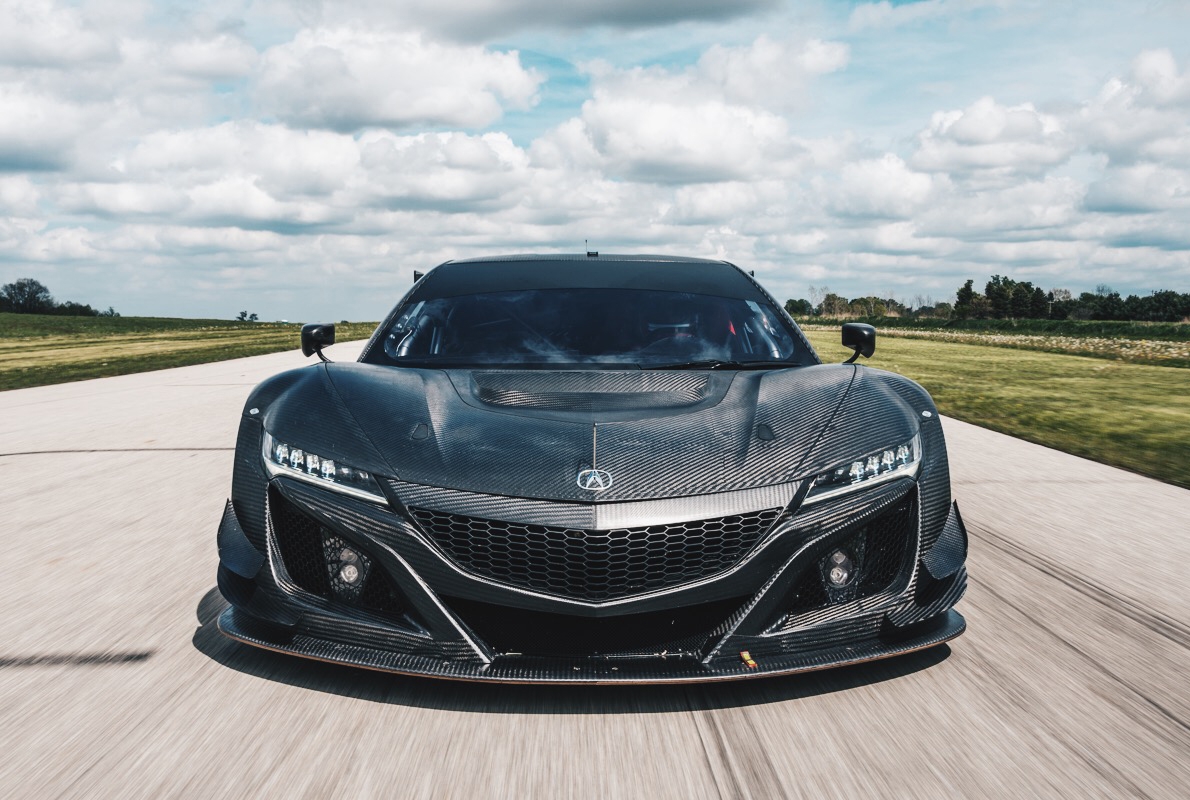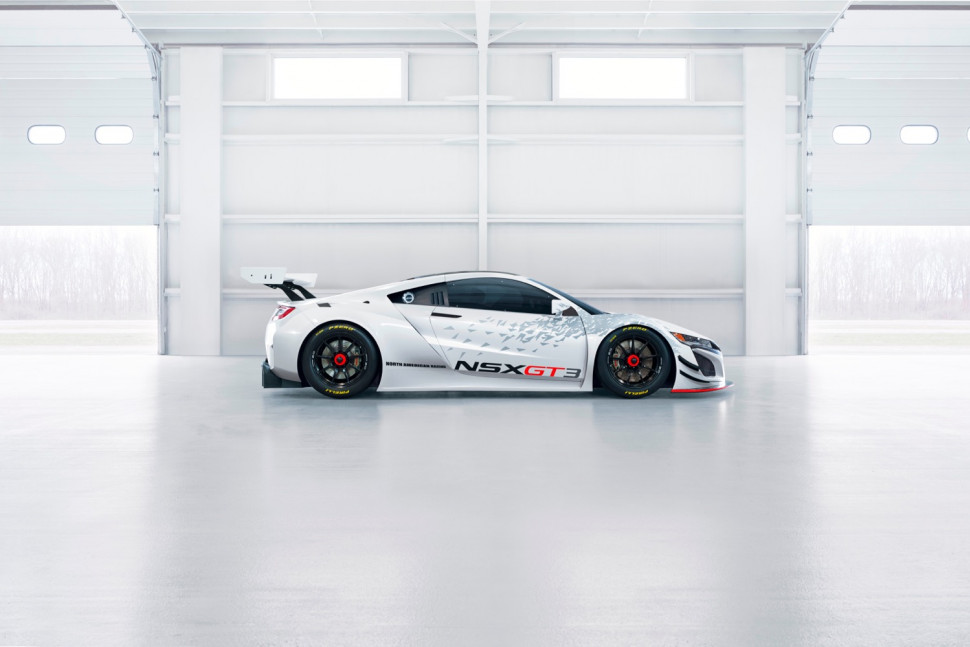The Acura NSX is a stunning display of balance, power, and performance-focused tech, but the GT3 race car version cranks everything up to 11. Developed to compete in the FIA’s GT3 class, the vehicle features a simpler, meaner powertrain setup and a variety of aerodynamic aids, all of which make the GT3 a can’t-miss attraction for those who crave speed. Thankfully, the car’s public debut is coming very, very soon.
Acura held a teleconference call Wednesday with Art St. Cyr, president of Honda Performance Development, to announce that the NSX GT3 would debut Thursday at the Pirelli World Challenge practice sessions in Lexington, Ohio. To be clear, the vehicle won’t be entering any races at the Mid-Ohio Sports Car Course, but this will be the first time the public will be able see the car in all its carbon-fiber glory.
“Based on a very successful test program, we’re taking the next logical step in seeing how we stack up against the competition,” said St. Cyr. “Mid-Ohio seemed like the perfect opportunity, given the demands it places on a race car and its proximity to NSX R&D and manufacturing.”
The differences between the standard NSX and the NSX GT3 are substantial. Obviously, the exterior has been thoroughly augmented with an enormous rear spoiler, enlarged hood vents, an underbody diffuser, and more exposed carbon fiber than you can shake a stick at. The interior has been stripped to save weight as well, but the biggest changes come under the skin.
Instead of the high-tech and complex all-wheel drive system of the roadgoing car, the GT3 version packs a more streamlined rear-wheel drive setup that includes a six-speed sequential gearbox instead of the nine-speed dual-clutch that comes stock. In addition, we believe the hybrid system has been removed to let the twin-turbo 3.5-liter V6 do all the work, but that has not been confirmed by Acura. From the factory, the engine alone produces 500 horsepower.
The NSX GT3 will be piloted by development driver Peter Kox from 8:50 a.m. to 9:30 a.m. ET on Thursday and from 4:15 p.m. to 4:45 p.m. ET on Friday. For more on the NSX and coverage of its track debut, stay tuned to DT Cars.













